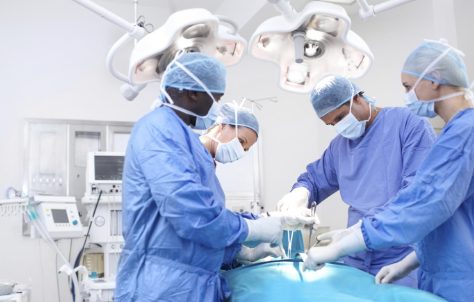🩸 Unlocking recovery: Strategies for accelerating nerve regeneration after prostate surgery 🚑
In the realm of post-prostate surgery recovery, the journey to restoring nerve function is a crucial aspect that demands attention. Let’s delve into effective strategies to speed up nerve regeneration after prostate surgery, shedding light on the intricate interplay between surgical procedures and nerve health.
Navigating the Surgical Landscape: Types of prostate surgery
Prostate surgery, often a necessary step in addressing various prostate conditions, takes different forms, each with unique implications for nerve health. Understanding this intricate connection is pivotal, especially concerning aspects like erectile function.
- Radical Prostatectomy: This procedure, involving partial or complete removal of the prostate, is a frontline defense against localized prostate carcinoma. However, its impact on surrounding nerves, especially the cavernous nerves vital for erectile function, is a critical consideration.
- Pelvic Lymphadenectomy: Precision is the essence of this surgery, as it involves the removal of pelvic lymph nodes. While crucial for assessing lymph node metastases, it also demands a delicate approach to minimize nerve-related repercussions.
- Transurethral Resection of the Prostate (TURP): Although not a cure for carcinoma, TURP aims to restore normal urine flow. Its significance lies in its potential impact on the intricate network of nerves within the prostate.
Understanding the Nerve Network: A Delicate Balance The prostate houses a myriad of nerves, particularly the cavernous nerves responsible for regulating blood flow to the penis. These nerves, susceptible to trauma during surgery, are a focal point for patients and healthcare professionals. Awareness of the potential impact of surgery on nerve function is crucial for managing postoperative expectations and exploring interventions to preserve erectile function.
Strategies for Speeding Up Nerve Regeneration:
- Early Mobility and Exercise: Gentle exercises promote blood flow and aid in the regeneration process. Consultation with healthcare professionals is crucial to tailor exercises to individual needs.
- Optimal Nutrition: A diet rich in nutrients supports nerve health. Vitamins and minerals like B-complex vitamins, vitamin D, and omega-3 fatty acids play a role in the regeneration process.
- Specialized Therapies: Physical therapy and specialized exercises designed to target the pelvic region can aid in nerve regeneration. Consult with healthcare providers for personalized guidance.
As patients embark on the path to recovery post-prostate surgery, a comprehensive understanding of nerve regeneration and proactive engagement with healthcare professionals can pave the way for a smoother journey to restored health and sensation. 🌱👨⚕️
Prostate surgery, a common intervention for various prostate conditions, is not without its challenges. Among them, the specter of erectile dysfunction (ED) looms large, particularly after a procedure known as nerve-sparing prostatectomy. Let’s explore the intricacies of this issue, the stages of erection, and effective strategies for recovery.
Nerve-Sparing Prostatectomy: A Shield Against ED In a nerve-sparing prostatectomy, surgeons meticulously navigate to preserve the delicate cavernous nerves surrounding the prostate, aiming to minimize the risk of ED post-surgery. These nerves, crucial for regulating blood flow to the penis, are vulnerable during a radical prostatectomy, where the prostate is fully removed. Even if not directly impacted, trauma during surgery can still pose a risk to the intricate network of penile nerves.
The Stages of Erection: Unraveling the Complex Process
The journey to an erection involves several stages, from latent to rigidity. However, the changes induced by prostate surgery, coupled with potential side effects, can disrupt these stages, leading to difficulties in achieving or maintaining an erection. Studies reveal that around 60% of patients experience ED 18 months post-surgery, with fewer than 30% recovering firm erections within five years.
Recognizing Penile Nerve Damage: Symptoms and Recovery

Penile nerve damage, a potential aftermath of prostate surgery, manifests through symptoms like lack of erection, reduced sensation, tingling, and discoloration. While discomfort may persist, nerves possess the capacity to regenerate gradually. Early intervention, including penile rehabilitation involving pharmacologic agents, interventions, and devices, can enhance outcomes and quality of life for patients.
Fast-Tracking Recovery: The Role of Early Ambulation In the quest for the fastest recovery post-prostate surgery, early ambulation emerges as a key player. Beyond preventing complications like blood clots and pneumonia, early walking stimulates the digestive system, aiding bowel activity. The psychological benefits, fostering a sense of progress and control, further highlight the importance of this simple yet powerful postoperative care strategy.
In essence, from understanding the nuances of nerve-sparing procedures to embracing early ambulation, a comprehensive approach paves the way for a swifter and more successful recovery journey after prostate surgery. 🌱👨⚕️



